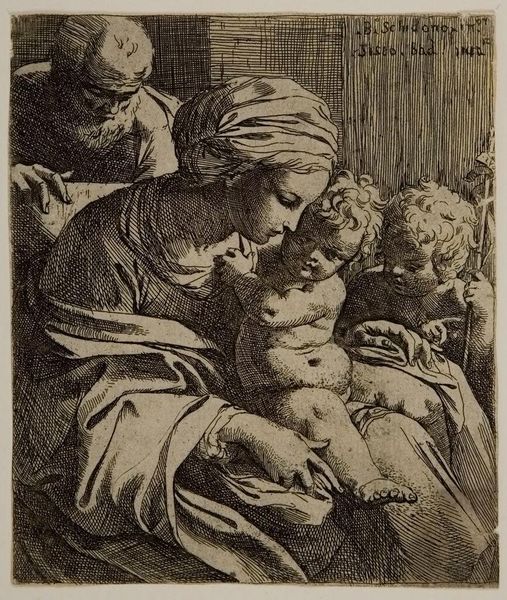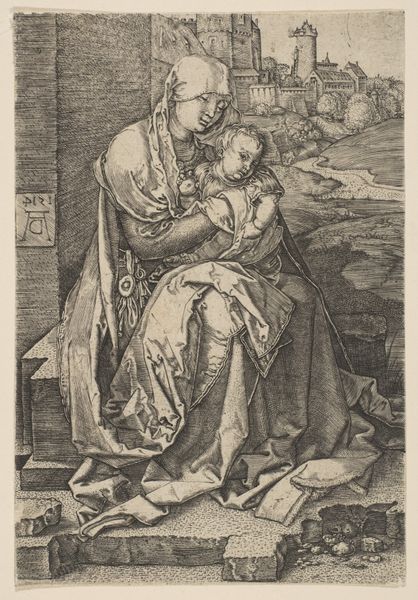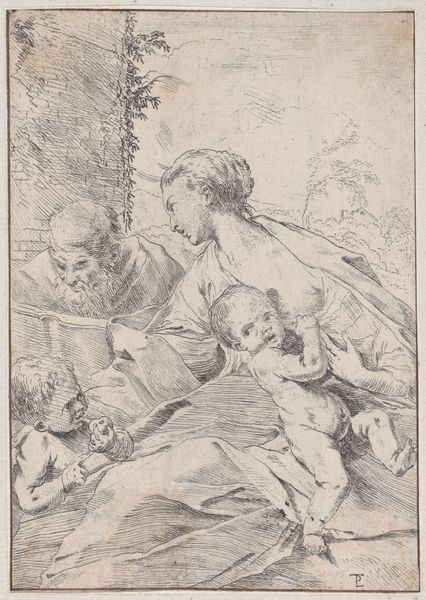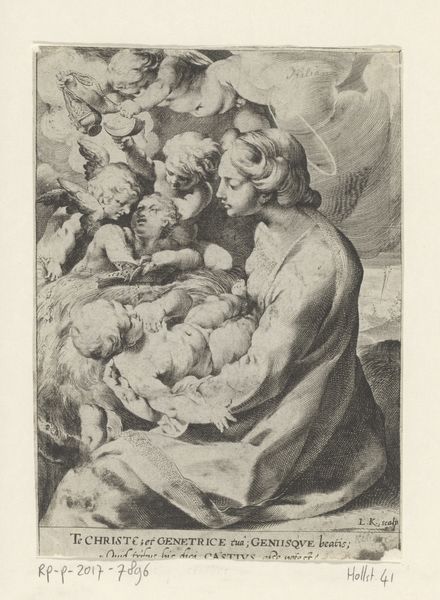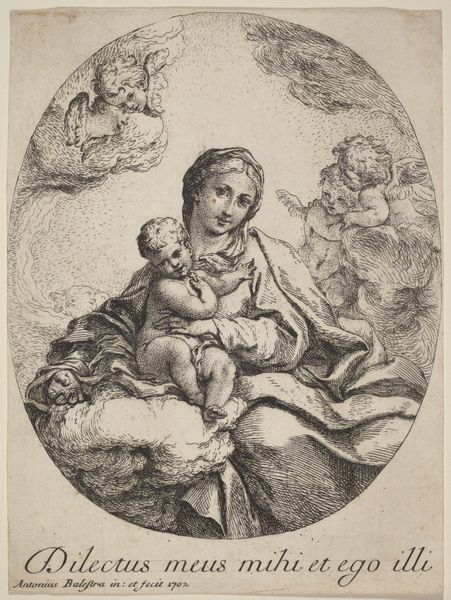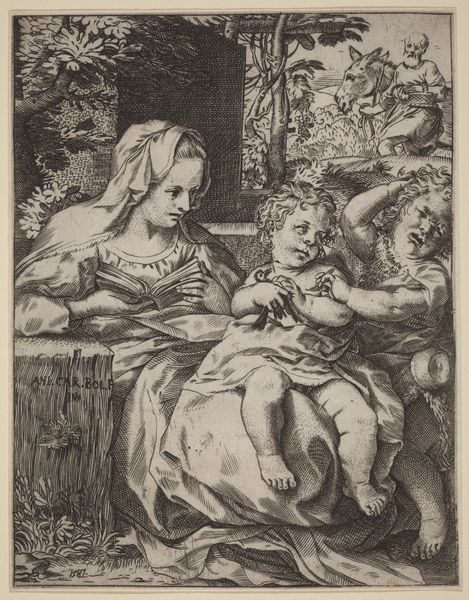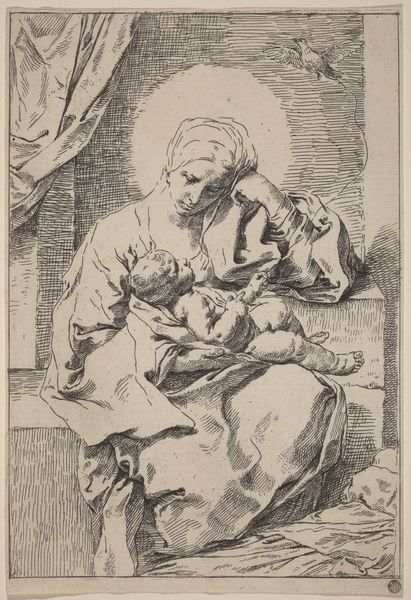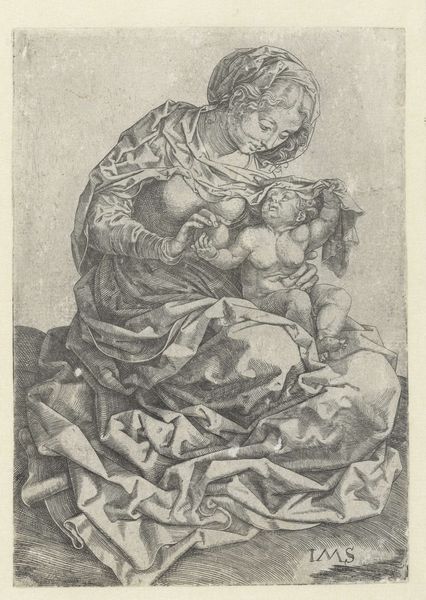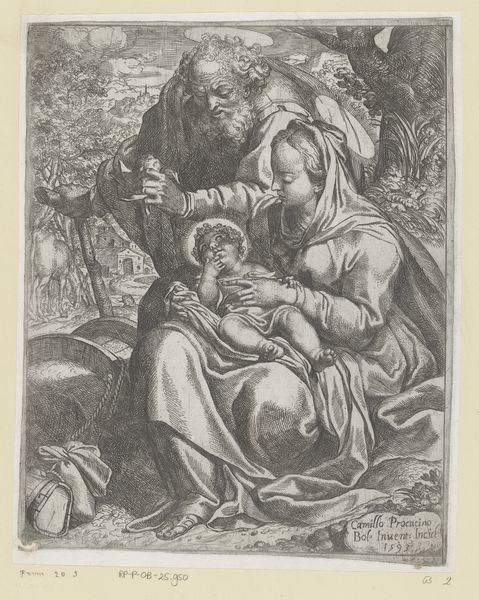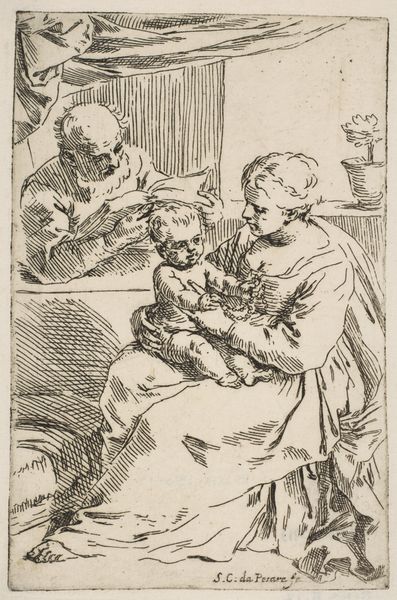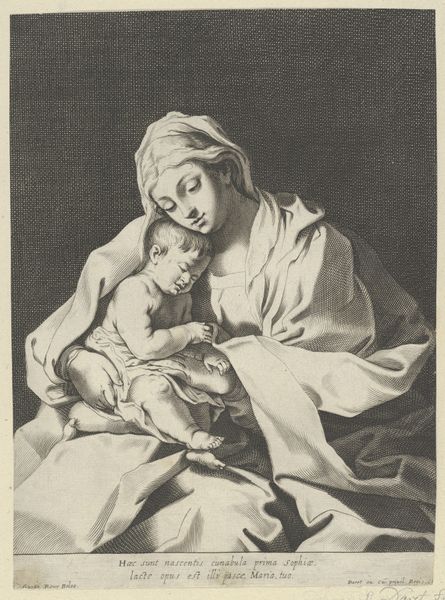
print, engraving
#
toned paper
#
light pencil work
#
baroque
# print
#
pen sketch
#
pencil sketch
#
old engraving style
#
figuration
#
personal sketchbook
#
pen-ink sketch
#
pen work
#
sketchbook drawing
#
sketchbook art
#
engraving
Dimensions: height 155 mm, width 131 mm
Copyright: Rijks Museum: Open Domain
Editor: Here we have Sisto Badalocchio’s “Holy Family with John the Baptist,” created sometime between 1591 and 1647. It's an engraving, with a delicate quality to it. What immediately strikes me is the intimacy conveyed despite the somewhat formal composition. What do you see in this piece, particularly regarding the figures' symbolic representation? Curator: Indeed, the intimacy arises from a complex visual language. The Holy Family is a well-established theme, but consider how Badalocchio positions John the Baptist – not just as a child, but carrying the symbols of his future martyrdom: the reed cross. This introduces an element of foreboding. Editor: That’s a compelling point. It complicates the otherwise tender scene. The Madonna's gaze also seems to anticipate this, doesn’t it? Curator: Precisely. The downturned eyes, the protective gesture toward the Christ child – these are not merely maternal instincts on display. There is a profound awareness of destiny encoded within the image. Even Joseph in the background, partially obscured, could symbolize the unknowable future and the burden of faith. Notice too, how the linear quality emphasizes form, while simultaneously suggesting vulnerability and transition. Does it evoke other similar artworks in your mind? Editor: It makes me think of other baroque works, especially with how they build complex allegories through detailed symbolic references. Curator: Right. But look more closely. It seems Badalocchio might subtly draw on earlier, perhaps Renaissance visual vocabularies too, so his statement might not be straightforwardly aligned with later Baroque works. Editor: This has changed how I view this seemingly straightforward scene. Now I can see layers of complex cultural references that shape our reading of it. Curator: Art invites us to interpret visual and symbolic dialogues across centuries. By exploring how images gain emotional, cultural, and psychological resonance, we develop an appreciation for the enduring human experiences communicated across time and traditions.
Comments
No comments
Be the first to comment and join the conversation on the ultimate creative platform.
